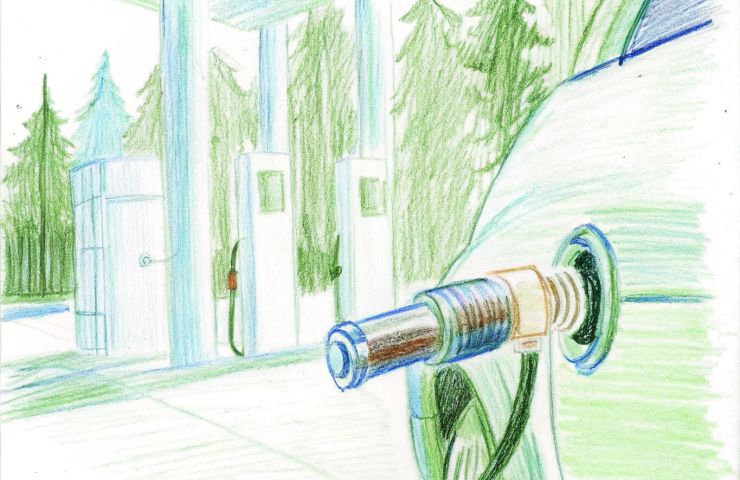
Hydrogen Refueling Safety Boosted by Insplorion and MannTek Collaboration
October 27, 2025Partnership Announcement and Goals
Swedish deep-tech pioneer Insplorion and fluid-handling expert MannTek have came together at the buzzing Hydrogen Technology Expo Europe in Hamburg. They put pen to paper on a Letter of Intent to explore how Insplorion’s clever NanoPlasmonic Sensing modules could snugly fit into MannTek’s high-performance refueling nozzles. What’s the big idea? Equip every hydrogen dispenser with real-time leak detection, so operators catch even the tiniest escape before it turns into a safety headache. Hamburg—with its 1.84 million residents and status as one of Europe’s busiest ports—was jam-packed with automotive, maritime, and energy pros, making it the perfect backdrop for the Insplorion MannTek partnership. The non-binding LOI lays out a roadmap for deep technical discussions, commercial talks, and joint workshops, with teams already hashing out timelines and pilot projects. All of this ties right into Europe’s sprint to shore up a robust, safe hydrogen fueling infrastructure, and it’s a launchpad for lab tests and demo sites across Scandinavia and beyond.
How NanoPlasmonic Sensing Works
Under the hood of this collaboration is Insplorion’s one-of-a-kind NanoPlasmonic Sensing technology. Picture this: palladium-alloy nanostructures so small they’re invisible to the naked eye, behaving like color-shifting mirrors anytime they meet hydrogen. As hydrogen molecules latch on, these tiny structures tweak how they scatter or absorb light—giving an instant, proportional readout. It’s almost like your refueling nozzle blushing to warn you of a leak. What makes NPS stand out among hydrogen sensors is its ability to perform in tough spots where others fizzle out—think low-oxygen or potentially explosive environments. With sensitivity down to trace levels, even the sneakiest leak can’t slip by. These sensors are also pint-sized, energy-sippers, and built to withstand high pressure, vibration, and temperature swings. And because hydrogen refueling safety is the name of the game, Insplorion’s chasing ATEX certification to make sure these modules can safely go global.
Practical Applications and Benefits
Slipping NanoPlasmonic Sensing modules into MannTek’s quick-connect, leak-proof nozzles means you get safety checks right where the action happens—at the fuel-transfer point. Imagine a tiny sensor picking up trace hydrogen in milliseconds, triggering an automatic shutoff or pinging an alert before a minor issue turns into a full-blown shutdown. For station operators and fleet managers, that translates into fewer surprise stoppages, lower maintenance costs, and a much stronger safety profile. Car manufacturers, public transit fleets, even space refueling missions stand to gain peace of mind from this extra layer of protection. And because the data streams into station-management software in real time, teams can nail down predictive maintenance, fixing hiccups before they cause downtime. The modular design also lets you swap out or upgrade the sensing core without ripping out the whole nozzle—keeping your hydrogen fueling infrastructure future-proof. In a nutshell, this duo is raising the bar on hydrogen refueling safety and making it easier to meet tomorrow’s regulations without breaking a sweat.
Environmental and Local Economic Impact
Hydrogen’s got a starring role in the decarbonization playbook for transport, logistics, and heavy industry—but only if it’s handled right. By making refueling stations more reliable and leak-free, the Insplorion MannTek partnership gives operators the confidence to ditch diesel and gasoline for good. Fewer leaks mean less wasted energy, so every kilogram of hydrogen really counts toward cutting greenhouse gas emissions. On the local front, both companies call Sweden home—proof that even smaller markets can lead a global clean-tech surge. “Made in Sweden” is more than a label; it’s an engineering guarantee. This initiative could spark new manufacturing lines, R&D gigs, and supply-chain jobs across the region. And as Insplorion pushes for ATEX certification, expect to see thousands of sensor-loaded nozzles roll off production lines, bolstering both economic growth and the expansion of Europe’s hydrogen fueling infrastructure.
Industry Context and Future Outlook
Hydrogen’s comeback as a clean-energy star has been held back by safety concerns—its invisible flame and wide flammability range give people pause. That’s where the Insplorion MannTek partnership comes in, tackling this barrier head-on. Recent company reports show orders for Insplorion’s sensors climbing steadily, proof there’s strong demand for certified hydrogen sensors. Meanwhile, MannTek’s global footprint in fluid and gas transfer gear means any breakthrough here could land at refueling stations around the world in no time. Over the next year, the teams have hands-on development workshops, lab validations, and pilot installations lined up to prove performance under real-world conditions. Moves like this also nudge industry standards bodies to consider mandating leak sensors, raising the bar for everyone. With the EU and other regions pouring billions into hydrogen fueling infrastructure, partnerships like this are exactly what we need to build trust and power the future without hidden leaks.


 With over 15 years of reporting hydrogen news, we are your premier source for the latest updates and insights in hydrogen and renewable energy.
With over 15 years of reporting hydrogen news, we are your premier source for the latest updates and insights in hydrogen and renewable energy.